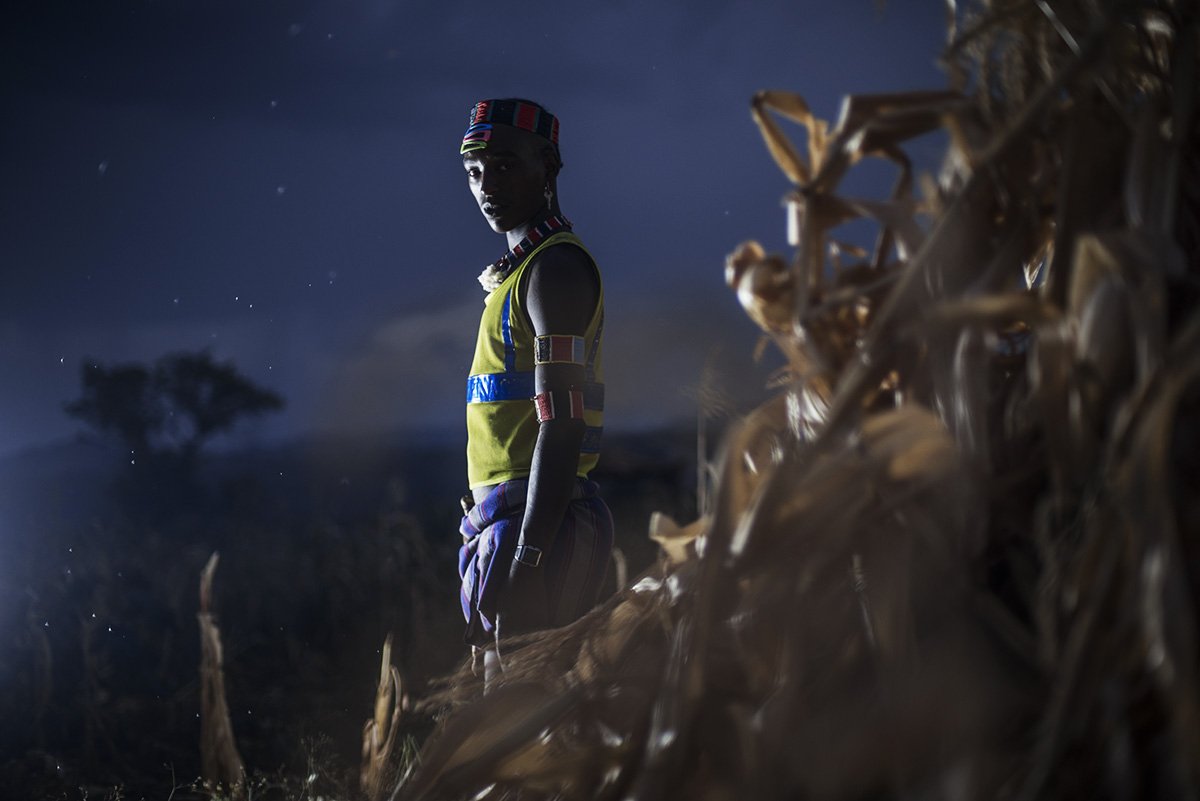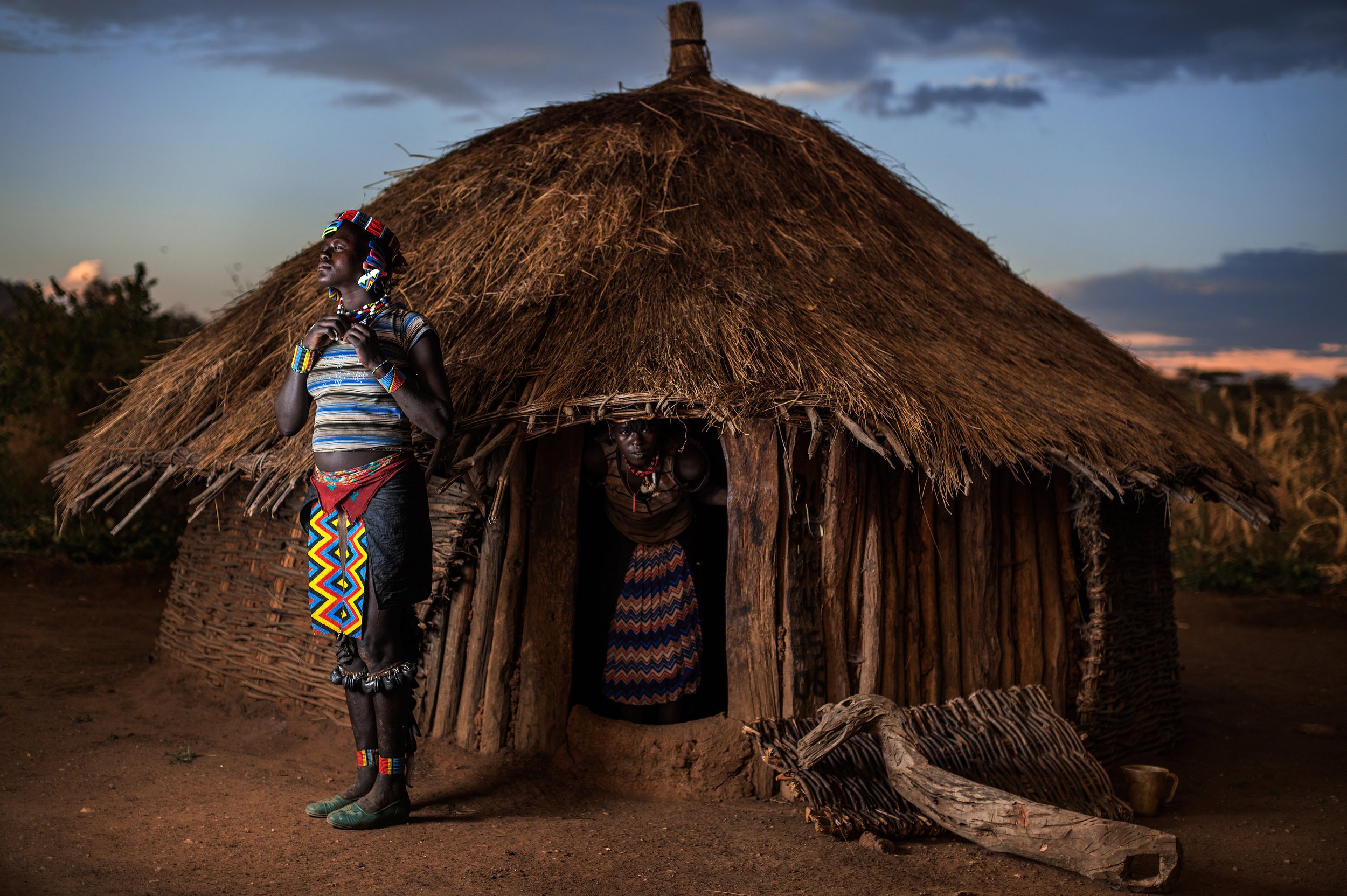Travel with me to Omo Valley, Ethiopia
Dates: 25 July - 5 August 2023
Cost: $3500
Total Participants: 6
I plan on embarking upon my fourth expedition to Omo Valley “Land of Rituals and Revenge” and would like to invite select photographers to accompany me on this extraordinary journey. This 10-day photography workshop will provide beginners the opportunity to meet some of the most ancient and remote ethnic groups in the world, in particular the tribes living in and around the Omo River Valley in southwest Ethiopia.
This is an intensive and rigorous 10 days – under the scorching sun, camping in the wild, braving the elements, as well as bone jarring commutes on dirt roads. There’s no resting post-breakfast or lunch, no checking up your social media feeds or catching up with friends. It’s a hectic, full day of work.
The rewards: You will engage with the community at large, observe and photograph their ancient customs and everyday activities, revel in the stunning landscape and return with renewed vigor to practice photography.
Highlights of the photography workshop:
Attend traditional ceremonies and seasonal events like Bull Jumping
Meet the Ari, Bana, Hamer, Karo, Mursi and Arbore tribes
Experience the weekly markets at Key Afer, Dimeka and Turmi
Camp next to tribal villages
Explore the natural wonders of the Great African Rift Valley
Visit a national park and a wildlife sanctuary
Dates: July 2023
Price: $3500
What’s so special about Omo Valley?
In the Crossroads of Culture
The Lower Valley of the Omo is a designated UNESCO World Heritage Site. This region is considered to be a veritable “crossroads of culture,” having borne witness to the movement and migration of different cultures and ethnic groups for thousands of years. “The entire Omo river basin is also important, geologically and archaeologically. Several hominid fossils and archaeological localities, dating to the Pliocene and Pleistocene have been excavated by French and American teams. Fossils belonging to the genera Australopithecine and Homo have been found at several archaeological sites, as well as tools made from quartzite, the oldest of which date back to about 2.4 million years ago.” (Citation: Wikipedia).
What got me interested in the Great Rift Valley?
I first set foot in Omo Valley in 2014 and all the prep work and research that I did or stories I had listened to didn’t even come close to the reality of what I experienced in my first trip. Besides the feral, breathtaking landscape, interacting and living with the tribal communities lent me a life-changing perspective of life here. The sacred and the profane co-exist, and you realize that the dilemmas we face of demarcating them in our ‘modern’ lives don’t have any place in the Omo Valley.
People of various disciplines all have their reasons to travel to the southern part of Ethiopia: to discover, study, categorize, and let the world know about this region. But as a photographer, my purpose for returning to the river valley is somewhat antithetical: I want to be able to capture a vestige of uncorrupted tribal life before it catches up with the civilized world. I want my work to stand testimony to the everyday lives of the inhabitants of Omo, right from their rituals and rites of passage, their overt violence and innate beauty, and the way they co-exist with nature, placing priority of family and togetherness.
This is a chance for select participants to step out of their comfort zone and enter a terrain that has somehow held its own against the sweeping forces of modernization and globalization.
Photography modules: What will you learn?
Lighting & composition
Hands on training in location photography using professional lighting equipment as well as natural light.
Style & genre
Exposure to different genres of photography, ranging from documentary and street to landscape and portraiture.
Professional equipment training
Applicants will have the opportunity to work with equipment from industry leaders, like Profoto, Nikon/Canon, and grips from industry leaders like Manfrotto to develop their styles in the best possible way.
Post-production & retouching
Basic training on post-production procedures using Lightroom, Adobe Photoshop, Camera RAW, and Bridge.
Workflow procedures & data management
Learn how to work with hard drives, memory cards and effectively manage data to store and archive your photographs.
What’s Included
Photography workshop by Trupal Pandya, local guides, and drivers
Entry fee for villages, markets, and ceremonies we will attend.
Breakfasts, lunches, dinners (typically in local restaurants where viable)
Packed drinking water throughout
Professional lighting equipment for training
All transport (4XWD land cruisers to/from Addis Ababa)
10-night accommodation (4 nights in hotels, 3 nights in camps and 3 nights in various lodges)
This is subject to change as per the location we are in.
What’s NOT Included
Your flights to and back from Addis Ababa
Your Visa/Travel fees
Tips to the locals
Alcohol and other personal expenses are not included.
Camera Equipment, Memory cards, Laptops, Etc
How it works
You apply by clicking the button on the bottom of the page
We schedule a zoom call and set expectations, answer questions, get to know each other and confirm things
Frequently Asked Questions
1. Where does the workshop take place?
The photography workshop takes place in the Omo Valley in Ethiopia. (10-days, excluding travel from your city to Addis Ababa in Ethiopia).
Upcoming workshop: July 2023
2. Who can apply for this workshop?
A photography enthusiast with a DSLR camera, dedicated and passionate about furthering their knowledge of photography and sensitive about different cultures and people. However, please be warned, this is not a vacation but an 10-day intensive workshop. We are restricting the group to a maximum of 6 participants, so the application is highly competitive. Only your experience and interest matter.
3. What is the total cost of the workshop?
The total cost of the workshop is $3500. This includes transport in Ethiopia, Hotels/Tents, meals, workshop fees, water, translator/guide and village entrance fees.
Your flights, Visa, tips to the locals who you photograph and other personal expenses are not included.
Once you apply and the application is reviewed, we will help you with the payments.
5. What about travel arrangements, VISA and local permits?
Participants are expected to book their return flight tickets from their city of residence to Addis Ababa, where you will meet Trupal Pandya. In case you are flying from New York, you can coordinate with Trupal to travel together. We will take care of pick up and drop off from the Addis Ababa Bole International Airport and the campsite.
Tourist visa can be issued for three months on arrival at Bole International Airport for nationals and residents of the following countries: Argentina, Australia, Austria, Belgium, Brazil, Canada, China, Czech Republic, Denmark, Finland, France, Germany, Greece, India, Ireland, Israel, Italy, Japan, Kuwait, Luxembourg, Mexico, the Netherlands, New Zealand, Norway, Democratic people's Republic of Korea (northern Korea), Poland, Portugal, Republic of Korea (south Korea), the Russian Federation, Slovakia, South Africa, Spain, Sweden, Switzerland, United Kingdom, United States of America.
Please confirm your VISA eligibility prior to applying for the workshop by checking out the Ethiopian embassy website.
6. Where would the participants stay and what about daily meals, sleeping arrangements, toilets?
Accommodation in the Lower Omo Valley is very basic. Hotels are rare and generally of a very rustic standard. In many places, the only option is to camp (equipment provided). Where possible we will be staying in simple eco-lodges.
Water: We will have at all times have enough packed water stored in the cars.
Meals: I recommend local restaurants. Part of the trip experience is trying local dishes. I have been going there quite often and have been eating without any problems. Food is normally prepared from fresh local produce. Meals will usually be hot but occasionally will be light meals such as sandwiches.
We recommended you consult your doctor and carry vaccines for travel to Ethiopia. Check the link for more details.
8. What are the weather conditions in the month we visit the Omo Valley? How will we get around?
Light rains and humid.
This trip is done in a private, 5-seater land cruiser. Road conditions in the south of Ethiopia are generally very poor, especially during the rainy season, and during dry seasons the roads turn quite dusty.
7. What is the photography gear participants should carry?
Mandatory: DSLR Camera, lenses, extra batteries, memory cards & card readers, laptop to transfer data, external hard drive for backup.
Other essentials: Flashlight, dust/rain protection for your cameras and bags, ziplocks, bug repellant spray or cream, hand/face wipes, basic medical supplies and first aid kit, good shoes, light cloths.
You will have to restrict your luggage to 2 bags max. 1 for your equipment and second for clothes/other supplies. We will be traveling in a car and will have limited space. Try and bring only the necessary things.
9. What about communicating with the tribes of the Omo Valley?
We have a guide/translator who has been taking me to the tribes from last couple of years. He is a local and has grown up with the tribes. Its home for him!
Reviews from previous students
“The workshop in Ethiopia was one of the greatest, most real experiences of my life. Being an 18 year old, I got to learn and nurture my skills at still-image making from one of the finest portrait photographers while being completely out of my comfort zone.
Trupal not only taught us the practical process, but even touched upon the theory to create a great still photograph. This workshop taught me the art of story-telling behind photography which was one of my biggest take-aways.”
“As an avid traveler and casual photographer I had been looking to improve my skills as well as take another trip to beautiful Southern Ethiopia, when I stumbled on Trupal’s work and workshops on a mutual friend’s website. His images spoke to me and I decided to apply instantly.
Best decision I ever made.Trupal is not only an incredibly gifted artist, he is also a terrific teacher. His groups are small and he spends a lot of time with each student individually, making sure that you grasp the theory he introduced, can apply it well, use the tools right, and ultimately are happy with the images you produce.This workshop is a fantastic opportunity for anyone with a serious interest in photography to learn from a world-class talent in one of the most unique and beautiful corners of the world.
”
“I had read an article regarding Trupal’s work photographing tribes around the world. His unique style and approach to photography is originally what caught my attention. As an university professor covering the topic of photography I am always keen to develop methods through practice. While already having years of knowledge and experience taking pictures there was still a lot to learn from his workshop to Nagaland.
A lot of attention was given to each participant both during the shoots and the post-production process. I would highly recommend all levels of photographers, professional or enthusiast, to participate in his workshops as they are a worry free learning experience with an approachable workshop leader. I can not wait to join the next adventure.
”
If you would like to participate in this 10-day photography workshop, please fill out the application form by clicking on 'Apply'. Please see the FAQ section for further details about VISA, trip requirements, who can apply, and more. Inquiries are now open, send your questions to trupal@trupalpandya.com.








